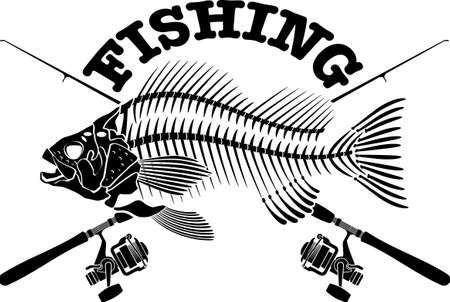1. Understanding Catfish Species and Habitats
When it comes to choosing the right rod, reel, and line for catfish fishing, it all starts with understanding the different species of catfish found across America and the unique habitats they call home. The three most common types you’ll encounter are channel catfish, blue catfish, and flathead catfish. Each of these fish has its own preferred environment—ranging from slow-moving rivers and muddy lakes to deep reservoirs and swift channels. Knowing where you’re fishing is key: a small river brimming with channel cats calls for lighter gear than a mighty river famous for trophy blue cats. Your gear choices should match not just the size of your target but also the challenges their habitats present, such as heavy cover, rocky bottoms, or strong currents. By getting familiar with both the local species and their favorite hangouts, you’ll set yourself up for a successful—and memorable—day on the water.
2. Selecting the Perfect Catfish Rod
If you want to bring home a monster catfish, picking the right rod is where your adventure starts. Not all rods are created equal, and making the right choice will make your day on the water way smoother—whether you’re bank fishing in a muddy river or drifting from a jon boat. Let’s break down the key factors: length, power, and material.
Rod Length: Reach and Control Matter
The length of your rod can seriously affect your casting distance and how much control you have when battling hefty cats. Here’s a quick reference:
| Rod Length | Best For |
|---|---|
| 6-7 feet | Tight spots, boat fishing, better control |
| 7-8 feet | General use, versatile for bank or boat |
| 8+ feet | Long casts from shore, big rivers, more leverage |
If you’re chasing channel cats in a small creek, a 7-foot rod will do just fine. For flatheads or blues in wide rivers, go longer so you can huck bait further and steer big fish out of snags.
Power: Matching Rod Strength to Your Target
“Power” means how much backbone the rod has. Catfish are bruisers—especially blues and flatheads—so you’ll want something beefy enough to handle their bulldog runs but sensitive enough for smaller channel cats. Here’s what to look for:
- Medium Power: Good for channel catfish and smaller waters.
- Medium-Heavy: The sweet spot for most catfishing situations—strong enough for hefty cats but not overkill.
- Heavy Power: Go heavy if you’re after trophy-sized blues or fishing snaggy waters where you need to muscle fish out fast.
Material: Durability Meets Sensitivity
Most American anglers go with fiberglass or composite rods for catfishing because they take abuse and offer plenty of flex for battling big fish. Graphite is lighter and more sensitive but might not be as tough when you’re hauling up giants from logjams. If you plan on dunking baits in rough cover, fiberglass is your best buddy. For folks who want a bit more feel (especially with lighter baits), a composite rod blends the best of both worlds.
Pro Tip:
No matter what rod you pick, always check that it has sturdy guides and a comfortable handle—cork or EVA foam work great for those long hours waiting on a bite.
![]()
3. Finding the Best Reel for the Job
Choosing the right reel can make or break your catfish fishing adventure. In the U.S., most anglers debate between baitcasting and spinning reels when targeting these whiskered giants. Each style brings its own set of strengths, and knowing when to use which one is key.
Baitcasting Reels: Power for Big Cats
Baitcasting reels are the go-to for many American catfish anglers, especially when chasing trophy blues or flatheads. These reels offer more power and control over heavy lines and larger baits, which is essential when wrangling big fish from river currents or snaggy lake bottoms. Baitcasters also allow for precise casting, so you can drop your bait exactly where those monster cats like to lurk—think deep holes or under log jams. The main learning curve here is thumb control to avoid backlash, but with a little practice, youll appreciate their muscle and accuracy.
Spinning Reels: Versatility and Ease
If youre newer to fishing or just want a more forgiving setup, spinning reels are a solid choice. Theyre easier to cast, rarely tangle, and handle medium-sized catfish without a hitch. Spinning gear shines in situations where finesse matters—like using lighter lines for channel cats or fishing with prepared baits along creek banks. Their open-face design makes them perfect for bank fishing or when you need to cover water with frequent casts.
When to Use Each Reel
So, which should you pick? If youre aiming for big cats in heavy cover or fast water, reach for a sturdy baitcaster paired with heavy line. For casual trips targeting eating-size channel catfish, a medium spinning combo will do just fine. Many experienced anglers keep both setups handy—because out here in America’s rivers and lakes, conditions (and catfish moods) can change in a hurry!
Pro Tip:
Always match your reel size to your rod’s rating and the line strength you plan to use. This balance keeps your gear working smoothly—so you can focus on enjoying the tug-of-war with America’s favorite whiskered fish.
4. Picking the Right Fishing Line
Catching catfish means gearing up for some seriously tough tugs, so your fishing line needs to be up for the challenge. The right line isn’t just about strength—it’s also about material and visibility. Here’s a handy guide to help you pick the best line for your next catfish adventure.
Line Strength: Breaking Pound Test
Catfish are known for their power, especially big blues and flatheads. Most anglers in the U.S. opt for lines with a higher pound test than they’d use for other freshwater species. Heres a quick breakdown:
| Catfish Size | Recommended Pound Test |
|---|---|
| Small (1-5 lbs) | 10-15 lb test |
| Medium (6-15 lbs) | 15-20 lb test |
| Large (16+ lbs) | 20-40+ lb test |
Choosing Line Material: Mono, Braid, or Fluoro?
Each type of fishing line comes with its own perks and quirks. Here’s what you need to know:
| Type | Main Advantages | When to Use |
|---|---|---|
| Monofilament (Mono) | Affordable, stretches under pressure (forgiving on runs), easy to tie knots with | Good all-around choice; beginners and most casual catfishing trips |
| Braided Line (Braid) | Very strong for its diameter, less stretch (better hooksets), sensitive to bites | Heavy cover, targeting trophy cats, when you want more control over big fish fights |
| Fluorocarbon (Fluoro) | Nearly invisible underwater, abrasion-resistant, sinks faster than mono | Mainly used as a leader tied to braid or mono when fish are spooky or in clear water |
Visibility and Color Choices for U.S. Waters
If you’re bank fishing in muddy rivers or lakes common across the States, high-visibility line can help you track your line at night or in low light—think neon green or bright orange. In clearer waters, though, stick with low-vis green or clear lines to avoid spooking wary cats.
Pro Tip:
If you like using braid for strength but need stealth near the hook, tie on a short fluorocarbon leader. This combo is popular among American catfish anglers who want both muscle and invisibility.
The right line sets the tone for your whole setup—get it right and those tough catfish won’t stand a chance!
5. Matching Your Gear to Your Location
When it comes to catfish fishing, the spot you pick is just as important as your tackle. Whether you’re wading into a riverbank at dawn, setting up along the shore of a quiet lake, or drifting across a massive reservoir from your boat, choosing the right rod, reel, and line combo can make or break your trip. Let’s break down how to match your gear with where you’re fishing—because every location has its own set of challenges and rewards.
Rivers: Go Heavy for Current and Cover
If you’re targeting catfish in rivers, especially those with strong current or lots of submerged trees and rocks, opt for a medium-heavy to heavy rod paired with a sturdy baitcasting reel. The current puts extra strain on your tackle, so you’ll want braided line (20-40 lb test) that can handle snags and big fish darting into cover. Don’t be shy about going heavier if you know there are monsters lurking in deep holes!
Lakes: Versatility Is Key
Lakes offer a bit more flexibility. Here, a medium or medium-heavy spinning combo works great—especially if you like moving around the shoreline casting bait or lures. Monofilament line (15-30 lb test) gives you enough stretch for sudden runs but won’t spook finicky cats in clear water. If you’re anchored or bank fishing near structure, consider bumping up to a baitcaster for better control when hauling in larger blues or channels.
Big Reservoirs: Gear Up for Distance and Depth
Reservoirs mean wide open water and sometimes deeper fishing. A longer rod (7-9 feet) helps you cast farther from shore or boat, reaching those drop-offs where trophy catfish hang out. Pair this with a high-capacity spinning or baitcasting reel and strong braided line (at least 30 lb test), especially if you’re battling wind or big waves. Don’t forget—a longer rod also gives you extra leverage when reeling in heavy cats from deep water.
Shore vs. Boat: Small Details Matter
If you’re fishing from the bank, portability is key—a two-piece rod is easier to haul down trails or fit in your trunk. From a boat? You can go heavier and bulkier since space isn’t an issue. Also, consider shorter rods (6-7 feet) for boat fishing—they give more control in tight quarters and make landing big fish easier over the rail.
The Bottom Line
No matter where you wet your line, matching your gear to your location ups your odds of hooking—and landing—that bucket-list catfish. Take a walk around your favorite spot and think about what kind of fight those whiskery giants might put up before you pick out your next rod, reel, and line combo.
6. Seasonal and Regional Considerations
When it comes to catfish fishing, where and when you cast your line can have a big impact on your gear choices. Across the United States, water conditions, temperature, and even catfish behavior shift with the seasons and regions—so your rod, reel, and line setup needs to shift too.
Spring into Action
In spring, as waters warm up and catfish become more active, lighter rods and reels can be a great choice for targeting channels or smaller blues in rivers and lakes. Braided lines in the 15-20 lb range give you sensitivity for detecting those subtle early bites.
Summer Tactics
Summer is prime time for trophy cats, especially in the South or Midwest. Here, youll want to step up to medium-heavy or heavy rods paired with baitcasting reels that can handle big flatheads or blues. Go for abrasion-resistant monofilament or braid in the 30-50 lb range, since these giants love thick cover and deep holes.
Fall Adjustments
As temperatures cool off in fall, catfish may move deeper or become less aggressive. Switch to longer rods for extra casting distance from the shore, and consider using fluorocarbon leaders if you’re fishing clear water reservoirs out West. This combo keeps you stealthy while still having enough backbone for a surprise big bite.
Regional Differences Matter
The Southeast’s muddy rivers call for strong, durable setups to battle big blues and flatheads among snags. In contrast, Northern anglers often chase smaller channel cats in rocky streams with lighter spinning gear. If youre fishing the Mississippi or big Texas reservoirs, go stout; if you’re in New England creeks, finesse setups get the job done.
Stay Flexible for Success
No matter where you are—from California’s delta waters to Oklahoma’s lakes—matching your gear to both the season and local environment is key. Keep an eye on local reports, talk to other anglers at the bait shop, and don’t be afraid to tweak your setup as conditions change throughout the year. That adaptability is what separates everyday fishing from truly memorable catfishing adventures!


